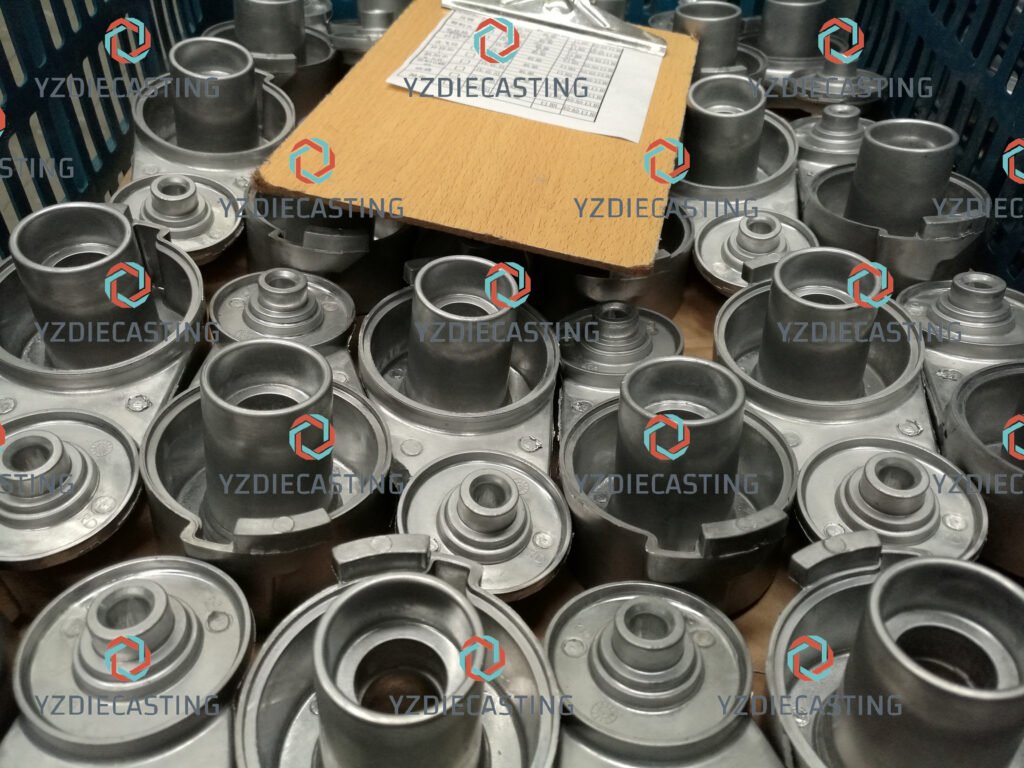Magnesium alloy die casting parts
Magnesium alloy Investment casting and Lost foam casting
Current Status of Magnesium Alloy Forming Technology
In recent years, the demand for lightweight materials has increased. As a structural material, magnesium alloy has the advantages of small specific gravity, high specific strength and specific rigidity, good thermal and electrical conductivity, good machinability, excellent damping and electromagnetic shielding, easy processing, forming and recycling, so it is widely used in automobiles. , Electronics, communications and other industries, known as “green engineering materials in the 21st century.”
According to the different forming process, magnesium alloy materials are mainly divided into two categories: cast magnesium alloy and wrought magnesium alloy. The former mainly obtains magnesium alloy products through casting. Including sand casting, permanent casting, investment casting, lost foam casting, die casting, etc. Among them, die casting is the most mature and widely used technology.
The latter is to produce plates, rods, tubes, profiles and forgings of various sizes through deformation. And through the control of the material structure and the application of the heat treatment process, higher strength, better ductility, and better mechanical properties can be obtained, so as to meet the needs of more structural parts. In addition, the semi-solid forming of magnesium alloys has also been widely studied and applied as a new casting technology.
Die casting
Die casting is the most important and widely used forming process for magnesium alloys. Magnesium alloy has excellent die-casting process performance. Magnesium alloy liquid has low viscosity, good fluidity, and is easy to fill complex cavities.
Magnesium alloy die casting advantage compare to aluminum alloy
Magnesium alloys can easily produce die castings with a wall thickness of 1.0mm to 2.0mm. And the minimum wall thickness can now reach 0.6mm. The casting slope of magnesium die casting is 1.5, while that of aluminum alloy is 2 to 3 degrees. The dimensional accuracy of magnesium die castings is 50% higher than that of aluminum die castings.
The melting point and latent heat of crystallization of magnesium alloy are lower than that of aluminum alloy. During the die-casting process, the erosion of the mold is smaller than that of aluminum alloy. And it is not easy to stick. Its mold life can be 2-4 times longer than that of aluminum alloy parts.
The die-casting cycle of magnesium alloy parts is shorter than that of aluminum parts. So the production efficiency can be increased by 25% compared with aluminum alloy parts. The processing performance of magnesium alloy castings is better than that of aluminum alloy castings. The cutting speed of magnesium alloy parts is 50% higher than that of aluminum alloy parts. And the processing energy consumption is 50% lower than that of aluminum alloy parts. Production experience shows that due to high production efficiency, the total cost of small parts of magnesium alloy die-casting in the hot chamber is lower than that of the same parts of aluminum alloy die-casting in the cold chamber.
Classification of magnesium alloys
Die-cast magnesium alloys can be divided into four series according to their composition: AZ (Mg
—AL—Zn) series (AZ91), AM (Mg—AL—Mn) series (AM60, AM50), AS (Mg-A1-Si series (AS41,
AS21), AE (Mg-AL-RE) series (AEA2).
AZ series alloy AZ91 has good casting performance and the highest yield strength. And its die castings are widely used in various forms of parts such as car seats and gearbox housings. AM series alloys AM50 and AM60 have high elongation and toughness. And are used in occasions with high impact resistance and high safety, such as wheels and doors. AS series magnesium alloys AS41, AS21 and AE series AFA2 are heat-resistant die-casting magnesium alloys developed in the 1970s.
The difference between cold chamber and hot chamber die casting of magnesium alloy
The cold and hot chamber die casting methods are widely used in magnesium alloy die casting. Generally, thin-walled castings use hot-chamber die-casting machines, and thick-walled castings use cold-chamber die-casting machines. Magnesium alloy hot chamber die casting machine is currently the most widely used special equipment for magnesium alloy die casting in foreign countries. It has the characteristics of high production efficiency, low pouring temperature, long casting life, and easy melt protection. The main disadvantage is the high cost of equipment and maintenance.
During magnesium alloy die-casting. The high-speed turbulent movement of the alloy liquid during the filling of the mold prevents the gas in the cavity from being discharged. Which will cause the structure to be loose, and even the surface of the casting can be bulged or deformed.
Die-casting process parameters such as pressure, speed, melt temperature, mold temperature, etc. have a significant impact on the properties of castings. Many new die-casting methods, including vacuum die-casting, oxygen-filled die-casting and squeeze casting. Have overcome the above shortcomings to a certain extent, reduced the defects such as loose structure and pores of the castings. And improved the density of the castings.
C. Rozak, a precision molding company in Ohio, USA,. Introduced the molding method of magnesium alloy metal compression molding technology (MCF) on the entire surface of the casting. It solidifies under pressure, improves the microstructure, and reduces the grain size and porosity. The castings are dense and uniform, and can be used to produce castings with high performance requirements and complex shapes.

